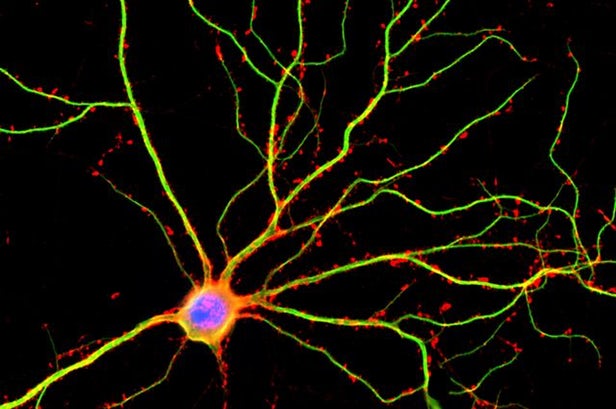Why our brains may be 100 times more powerful than believed

The dendrites in our brain have been underestimated for 60 years says a new study (Credit: vitstudio/Depositphotos)
A new study out of the University of California Los Angeles (UCLA) has found that one part of the neurons in our brains is more active than previously revealed. The finding implies that our brains are both analog and digital computers and could lead to better ways to treat neurological disorders.
The focus of the study was the dendrites, long branch-like structures that attach to a roundish body called the soma to form neurons. It was previously believed that dendrites were nothing more than conduits that sent spikes of electrical activity generated in the soma to other neurons. But the study has shown that the dendrites themselves are highly active, sending spikes of their own at a rate 10 times that previously believed.
The finding runs counter to the long-held belief that somatic spikes were the main way we learn and form memories and perceptions.
"Dendrites make up more than 90 percent of neural tissue," said UCLA neurophysicist Mayank Mehta, the study's senior author. "Knowing they are much more active than the soma fundamentally changes the nature of our understanding of how the brain computes information. It may pave the way for understanding and treating neurological disorders, and for developing brain-like computers."
The researchers also found that unlike the spikes of electrical activity generated by the somas, the dendrites could put out longer-lasting voltages that in their sum total were actually more powerful than the somatic spikes. They say the spikes are like digital computing in that they are all-or-nothing events, while the dendritic flows are akin to analog computing.
"We found that dendrites are hybrids that do both analog and digital computations, which are therefore fundamentally different from purely digital computers, but somewhat similar to quantum computers that are analog," said Mehta. "A fundamental belief in neuroscience has been that neurons are digital devices. They either generate a spike or not. These results show that the dendrites do not behave purely like a digital device. Dendrites do generate digital, all-or-none spikes, but they also show large analog fluctuations that are not all or none. This is a major departure from what neuroscientists have believed for about 60 years."
Mehta adds that the fact that dendrites are about 100 times larger in volume than somas, it's possible that our brains have 100 times more capacity to compute information than previously believed.

A neuron with the dendrites shown in green (Credit: Shelly Halpain/UC San Diego)
In making their discovery, the UCLA team was able to implant electrodes in the brains of rats that went next to dendrites. This was a departure from previous work where the sensors went straight into the dendrites, killing them and making their activity impossible to measure. They found that the dendrites were five times more active than the somas when the rats were sleeping, and 10 times more active when they were awake and moving about.
The discovery shows that learning likely takes place with more flexibility than previously believed.
"Many prior models assume that learning occurs when the cell bodies of two neurons are active at the same time," said Jason Moore, a UCLA postdoctoral researcher and the study's first author. "Our findings indicate that learning may take place when the input neuron is active at the same time that a dendrite is active — and it could be that different parts of dendrites will be active at different times, which would suggest a lot more flexibility in how learning can occur within a single neuron."
"Due to technological difficulties, research in brain
function has largely focused on the cell body," added Mehta. "But we
have discovered the secret lives of neurons, especially in the
extensive neuronal branches. Our results substantially change our
understanding of how neurons compute."
The research has been published in the journal Science.
Source: UCLA
